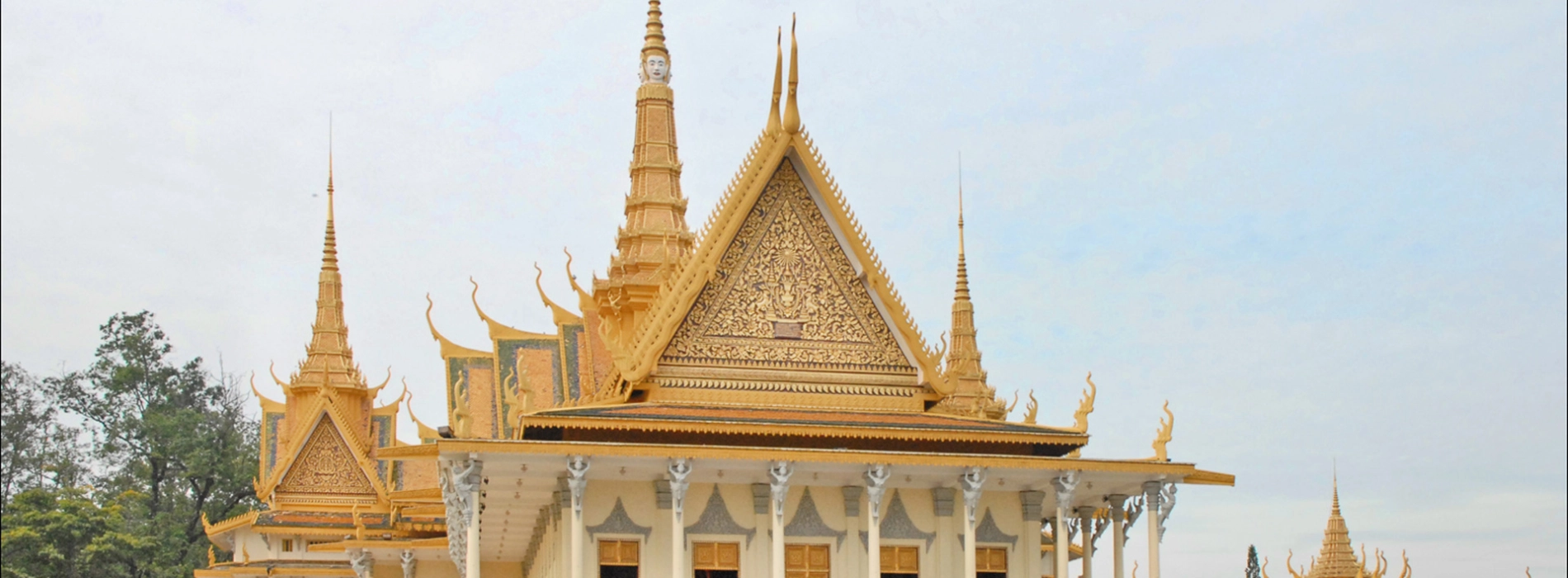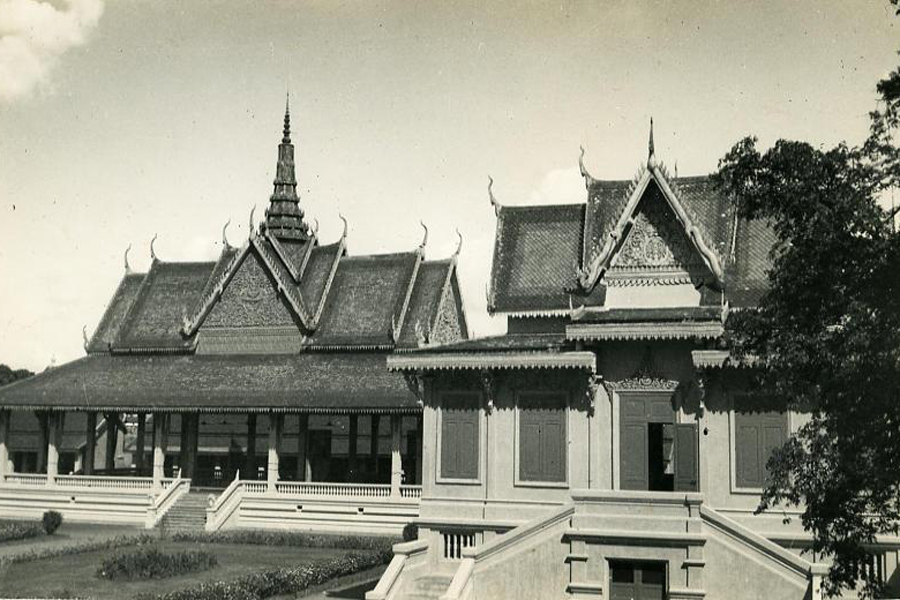Royal Palace

The Royal Palace in Phnom Penh, Cambodia, is an architectural marvel steeped in rich history and cultural significance. Built in 1866 under the reign of King Norodom, this grand complex showcases the splendid beauty of traditional Khmer architecture, characterized by intricately designed structures, gilded roofs, and ornate decorations.
At the heart of the palace grounds lies the Silver Pagoda, a sacred space adorned with silver floor tiles and housing precious Buddha statues made of gold and diamonds. The Throne Hall, with its distinctive Khmer-Thai fusion roof, serves as a venue for royal ceremonies, adding to the palace's regal allure. Surrounded by well-manicured gardens, the Royal Palace provides a serene retreat for visitors, allowing them to explore Cambodia's royal history, cultural heritage, and witness the continued legacy of its monarchy. As a cultural icon and tourist attraction, the Royal Palace stands as a testament to Cambodia's enduring cultural identity and regal legacy.
Steeped in the annals of Cambodia's storied past, the Royal Palace in Phnom Penh serves as an architectural testament to the nation's resilience and cultural richness. Conceived under the reign of King Norodom I in 1866, this sprawling complex has borne witness to the ebb and flow of Cambodia's history, reflecting the evolving aspirations and influences of each successive monarch. The palace's architectural grandeur, characterized by intricate carvings, splendid gilded roofs, and sprawling grounds, showcases a harmonious blend of traditional Khmer styles and influences from various epochs.
 The palace features royal Cambodian architecture, with typical motifs
The palace features royal Cambodian architecture, with typical motifs
The Royal Palace, standing as a sentinel along the convergence of the Tonle Sap and Mekong Rivers, has endured through periods of profound political change, including the challenges of the French colonial era and the traumatic years of the Khmer Rouge regime. The palace complex, though bearing scars from such tumultuous times, emerged as a symbol of Cambodia's resilience, undergoing meticulous restoration efforts to preserve its historical and cultural significance.
At its heart, the Throne Hall has played a central role in Cambodia's royal ceremonies and state functions, witnessing coronations and hosting dignitaries. The Silver Pagoda, an integral part of the palace grounds, not only dazzles with its silver-laden floor tiles but also cradles precious religious artifacts, including the revered Emerald Buddha and a collection of gold and diamond-studded Buddha statues.
 Indochina Cambodia Phnom Penh Royal Palace Old Amateur Snapshot Photo 1930
Indochina Cambodia Phnom Penh Royal Palace Old Amateur Snapshot Photo 1930
In the post-conflict era, the Royal Palace has transcended its role as a regal residence to become a captivating destination for global visitors. As tourists wander through the meticulously maintained gardens, explore the ornate halls, and witness the timeless traditions of the Cambodian monarchy, they partake in an immersive journey through the nation's history and cultural heritage. Today, the Royal Palace stands not just as a historical relic but as a vibrant testament to Cambodia's enduring cultural identity, inviting the world to marvel at its architectural splendor and appreciate the resilience embedded in its hallowed halls.
You may also like: 10+ Interesting Facts about Angkor Wat Temple Cambodia
The best time to visit the Royal Palace in Phnom Penh, Cambodia, is during the dry season, which typically extends from November to March. During this period, the weather is more comfortable with lower humidity, making it more pleasant for outdoor exploration. The months of December and January are particularly favorable, as temperatures are cooler, ranging from 20 to 30 degrees Celsius (68 to 86 degrees Fahrenheit).
 Royal Palace – Outstanding Masterpiece of Khmer Architecture in Cambodia
Royal Palace – Outstanding Masterpiece of Khmer Architecture in Cambodia
Avoiding the rainy season, which typically occurs from May to October, is advisable. Heavy rains can lead to flooding and muddy conditions, making it less enjoyable for sightseeing. Additionally, Cambodia experiences a hotter and more humid climate during the months leading up to the rainy season.
The Royal Palace is located in the heart of Phnom Penh, the capital city of Cambodia. Getting there is relatively easy, and you can use various modes of transportation:
1. Air Travel:
If you are arriving from another city or country, Phnom Penh International Airport (PNH) is the main airport serving the city. From the airport, you can take a taxi or arrange for transportation to reach the Royal Palace.
2. Taxi:
Taxis are a convenient way to reach the Royal Palace from different parts of Phnom Penh. Taxis are readily available in the city, and you can either flag one down or ask your hotel to arrange one for you. Make sure the taxi uses a meter or agree on a fare before starting your journey.
3. Tuk-Tuk:
Tuk-tuks are a popular and affordable mode of transportation in Phnom Penh. These three-wheeled vehicles are open-air and provide a unique way to experience the city. Negotiate the fare with the tuk-tuk driver before starting your journey.
4. Moto (Motorcycle Taxi):
Motorcycle taxis, known as "motos," are another common means of transportation in Phnom Penh. Like tuk-tuks, negotiate the fare beforehand and wear a helmet for safety.
5. Walking:
If you're staying in the central part of Phnom Penh, the Royal Palace may be within walking distance. This allows you to explore the local surroundings and take in the sights along the way.
6. Public Transportation:
Phnom Penh has limited public transportation options, but there are local buses and cyclos (bicycle rickshaws). However, these may not be as commonly used for reaching specific tourist destinations.
Make sure to confirm the directions with the driver, especially if there is a language barrier. The Royal Palace is a prominent landmark in Phnom Penh, and most locals will be familiar with its location.
You may also like: Top 7 Historical Sites in Cambodia